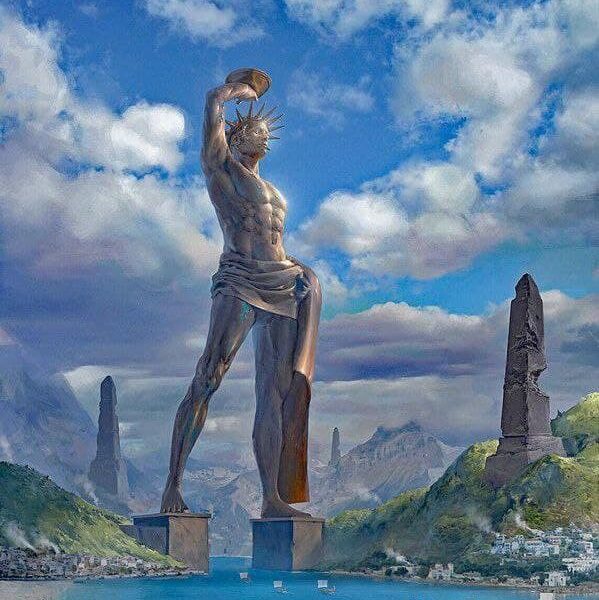It was a colossal statue of the sun god Helios that stood in the Greek city of Rhodes and was one of the Seven Wonders of the World. The sculptor Chares of Lindos created the statue, which commemorated the raising of Demetrius I Poliorcetes’ long siege (305 BC) of Rhodes. Made of bronze and reinforced with iron, it was weighted with stones.
The Colossus was said to be 70 cubits high and stood beside Mandrákion harbour, perhaps shielding its eyes with one hand, as a representation in a relief suggests. It is technically impossible that the statue could have straddled the harbour entrance, and the popular belief that it did so dates only from the Middle Ages.
The statue, which took 12 years to build (c. 294–282 BC), was toppled by an earthquake about 225/226 BC. The fallen Colossus was left in place until 654 AD, when Arabian forces raided Rhodes and had the statue broken up and the bronze sold for scrap. Supposedly, the fragments totaled more than 900 camel loads.
The Colossus of Rhodes reportedly stood about 110 feet tall atop a 50-foot platform. By comparison, the Great Pyramid of Giza, the only ancient world wonder that still survives, initially rose about 481 feet when it was completed, likely sometime between 2560 B.C. and 2540 B.C. Another ancient world wonder, the Statue of Zeus at Olympia, produced in the mid-fifth century B.C., was about 40 feet tall.
Today, the world’s tallest statues include China’s Spring Temple Buddha, which stands 354 feet atop a 66-foot-high lotus throne (that itself sits on an 82-foot-tall building), and Burma’s Laykyun Setkyar Buddha, which is 381 feet high with a 44-foot-tall base; both structures were completed in the early 21st century.
In 2008, government officials in Rhodes announced plans were in “the drawing board stage” for a new Colossus; rather than being a replica, it’s intended to take shape as the planet’s largest light sculpture.


